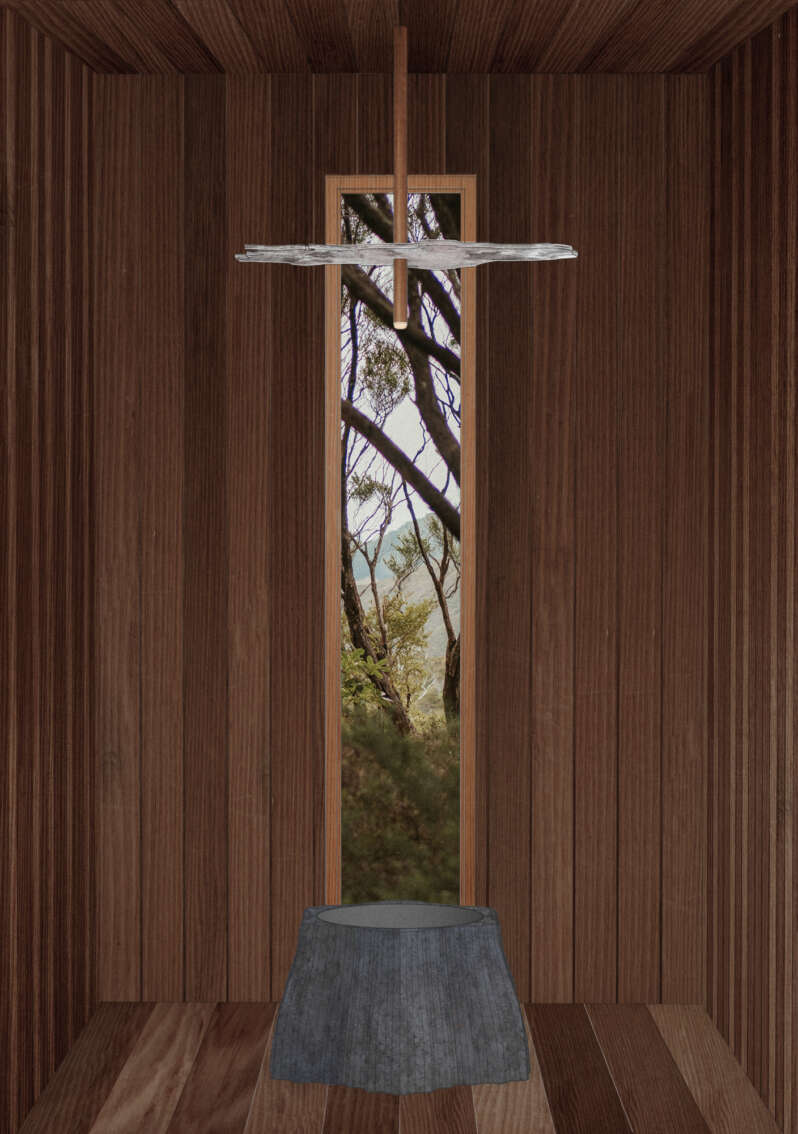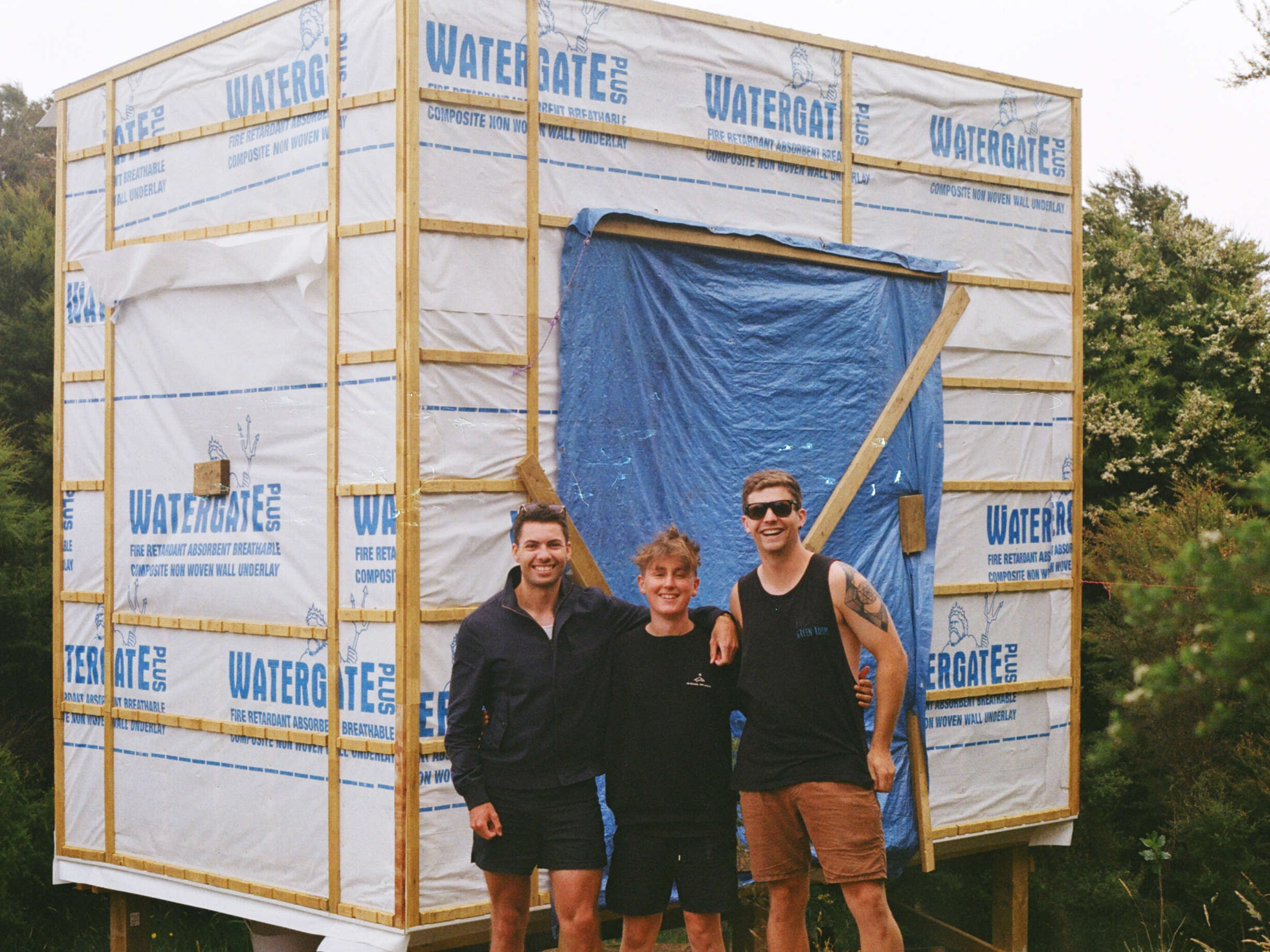You can only learn so much from paper projects. As students, most of you will probably have to wait until you are practising architects to get work built, so setting yourselves a challenge to build an unconsented 10m2 sculptural hut provides early knowledge and experience far outside the 'norm' for your thesis year.
With the result being far from 'normal', Will took advantage of co-owned family land where his brothers and sisters grew up, just north of Colville Town in the Coromandel, to continue the forgotten tradition of self-built architecture. With a tight budget and a year up his sleeve, Will designed and built a simple but elegant timber-framed hut. Prefabricated panels were assembled in the University's workshop, transported to site, and the hut was built in stages over the year with assistance from his father.
By focusing on craft, Will personalised the internal space to connect to the site's unique undulating landforms and thick manuka clad bush, all the while having minimal impact on the environment. The project offers stark contrasts and skills by combining low tech found and recycled materials with high tech computer fabricated fittings and fixtures. Custom-made fittings such as cast bronze pull handles, aluminium puddle pendant lights and an interlocking concrete long-drop composting toilet, transcend the project into the craft of architecture and the search for beauty that we all strive for as architects.
Hopefully, future self-build projects are more likely to become commonplace in future student thesis work due to ever-increasing land prices, expensive builder rates and the increasing cost of building materials, not to mention council fees for resource and building consents. Architects are continually balancing their risks and rewards, something that Will's thesis has successfully proven by his skill in problem-solving 1:1 construction details and his determination to complete his first built work.
By taking on the project's risks himself, and becoming the builder and architect, Will's thesis project will hopefully inspire other students to undertake self-build architecture. It might not be finished, but that's the beauty of self-built projects. They never are.
— Matt Liggins, supervisor




























